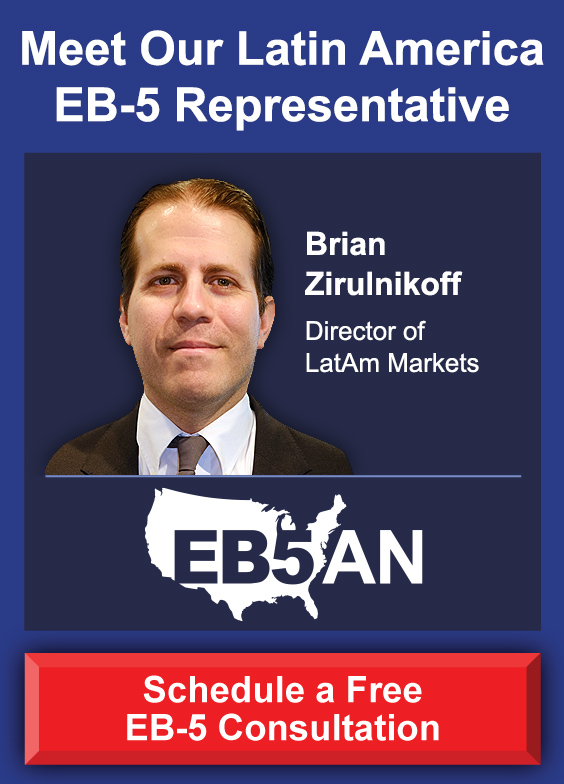In the past few years, the EB-5 program—a straightforward pathway for foreign investors to obtain U.S. permanent residency—was severely impacted by lengthy processing delays and uncertainties, especially during the global pandemic.
However, recent positive developments within the program, spearheaded by the EB-5 Reform and Integrity Act of 2022 (RIA), have ushered in a new era of optimism as EB-5 visa petitions are being processed in an incredibly short time.
The timeline for petition approval is a crucial factor in the Green Card process for foreign nationals seeking permanent resident status in the United States. When processing times stretch into years, it can be detrimental to the future plans of the applicants.
Fortunately for EB-5 investors, petition processing times have improved significantly after the new legislation was implemented. In 2023, multiple I-526E applications were approved within 12 months, which is far less than the historical average for the EB-5 program.
In this article, we will understand the reasons for these “new” processing times and discuss how choosing a rural area investment can expedite the Green Card approval for investors and their families.
Addressing the Backlog With Reforms
Rural Investments Accelerate I-526E Approvals
Green Card Benefits in Months With EB-5 Concurrent Filing
Accelerate Your Immigration Process With EB5AN
Addressing the Backlog With Reforms
The EB-5 Immigrant Investor Program, administered by United States Citizenship and Immigration Services (USCIS), was created in 1990 to stimulate the U.S. economy through job creation and capital investment by foreign investors. It enables investors and their eligible dependent family members (the spouse and unmarried children under 21) to obtain lawful permanent residency in the United States by investing a minimum amount in a commercial enterprise and creating 10 permanent full-time jobs for qualified U.S. workers.
The program gained immense popularity in the last decade among high-net-worth individuals seeking a secure pathway to U.S. permanent residency. The bulk of the EB-5 visa demand came from a few countries, with China and India leading the statistics.
However, limited annual visa availability coupled with administrative challenges and policy shifts led to a mounting backlog of applications, leaving investors in a state of limbo for extended periods.
After years of delay, USCIS and its Immigrant Investor Program Office (IPO) have demonstrated a renewed commitment to streamline immigration procedures and enhance operational efficiency.
By hiring more personnel and implementing new procedures, the agency is paving the way to cut down processing times significantly. As a result of its efforts, in FY2023, USCIS reduced its backlog for the first time in over a decade.
In addition, by introducing groundbreaking reforms in the EB-5 program, the RIA has provided the necessary framework to address long-standing bottlenecks in the EB-5 program. Undeniably, there has been a steady improvement in the processing volume and adjudication time of EB-5 petitions post-RIA.
The fact that several EB-5 petitions filed after the enactment of the RIA in March 2022 were approved within a year proves the efficacy of the landmark legislation.
Rural Investments Accelerate I-526E Approvals
A primary focus of the RIA was to redirect investments from urban areas to underserved rural areas and stimulate economic growth in such communities with much-needed funds.
By allocating a significant portion of the annual EB-5 visa quota to rural targeted employment area (TEA) projects and mandating priority processing for rural investments, the legislation has created a powerful incentive for investors to explore opportunities in rural areas. These two measures have played a major role in faster adjudication of petitions.
Set-Aside Visa Quota
To draw investors’ interest to certain types of projects, the RIA has allocated 32% of the yearly EB-5 visa pool as set-aside visas for investments in rural TEAs (20%), high-unemployment TEAs (10%), and developmental infrastructure projects (2%).
Foreign nationals investing in projects that qualify for set-aside EB-5 visas can bypass the long unreserved category queue and obtain an EB-5 visa as soon as their EB-5 petition (Form I-526E) is approved.
The set-aside visas have proved to be a turning point in drastically reducing years-long processing times to just a few months. This is especially true for investors from high-demand countries like China and India. Since each country participating in the program is allotted only 7% of the total annual quota of visas, these countries often exceed their supply, resulting in substantial petition backlogs and a lengthy wait for their Green Card approval.
Among the three set-aside categories, rural investments are the best option for investors seeking faster approval. With the maximum set-aside quota and relatively low demand, reserved visas in the rural category are most likely to remain available for a longer time, with a lesser probability of retrogression or backlogging.
Priority Processing
Complementing the set-aside visa quota, the RIA has mandated priority processing for rural EB-5 petitions. To foster development in rural areas, the new law aims to prioritize the adjudication of rural EB-5 petitions over other petitions. This is an added benefit for rural investors as it further speeds up the processing of their Green Cards.
In fact, the fastest I-526E approvals in the past few months have been for rural TEA petitions.
To fully appreciate how the RIA has given momentum to expedited processing of EB-5 petitions with effective measures such as set-aside visas and priority processing, let us compare the “new” I-526E processing times with average processing times of pre-RIA (legacy) I-526E petitions.
As published on the “Check Case Processing Times” page of the USCIS official website, the processing time to complete 80% of the I-526 petitions filed before the RIA came into effect is 89 months for China and about 54 months for all other countries.
In comparison, the latest processing times for rural I-526E petitions of 9 to 12 months is a remarkable phenomenon and an invaluable opportunity for investors to complete their immigration journey in the shortest possible time.
That said, while the reserved quota of set-aside visas is currently available, the supply may be used up soon. Investors’ interest in the EB-5 program has shot up following the implementation of the RIA, and the number of applications is rapidly rising. To avoid any potential backlogging in the reserved category, prospective investors should apply as soon as possible.
Green Card Benefits in Months With EB-5 Concurrent Filing
EB-5 concurrent filing is another innovative provision of the RIA that has effectively cut short EB-5 visa processing time by years. For investors already residing in the United States on a valid non-immigrant visa, such as H-1B, E-2, or F-1, the RIA has introduced the option of simultaneously filing Form I-526E and Form I-485 for adjustment of status (AOS).
Before the RIA, an EB-5 investor having a non-immigrant status in the United States could not file Form I-485 until their I-526E petition was approved. They also could not apply for a work or travel permit while they waited for years for the approval of their EB-5 immigrant petition.
Now, EB-5 applicants can file forms I-526E and I-485 at the same time, while they are also eligible to apply for work authorization and travel permit. These two applications are processed before the I-485 petition and can be approved in just a few weeks.
Once petitioners’ work and travel permits are approved, they are free to live and work anywhere in the United States and travel internationally without restrictions. Effectively, they can start availing the benefits of a Green Card much before it is actually approved.
Accelerate Your Immigration Process With EB5AN
With the impact of reforms in the EB-5 program becoming visible in shrinking processing times, the EB-5 visa has become one of the most viable pathways to obtain a U.S. Green Card within a short time.
A rural TEA project is undeniably the best investment option to avoid processing delays; however, it also entails some risks that investors must watch out for. EB5AN can help you find a suitable low-risk rural project that meets your immigration and financial goals.
EB5AN has helped more than 2,300 families from 60 countries relocate to the United States as lawful permanent residents. Our expert team has more than a decade of experience and offers clients first-rate, low-risk EB-5 regional center projects with a 100% USCIS project approval rate.
To hear about the real-life success stories of rural EB-5 investors, check out our testimonials.
If you wish to know more about rural investment options, book a free call with our expert team today.















